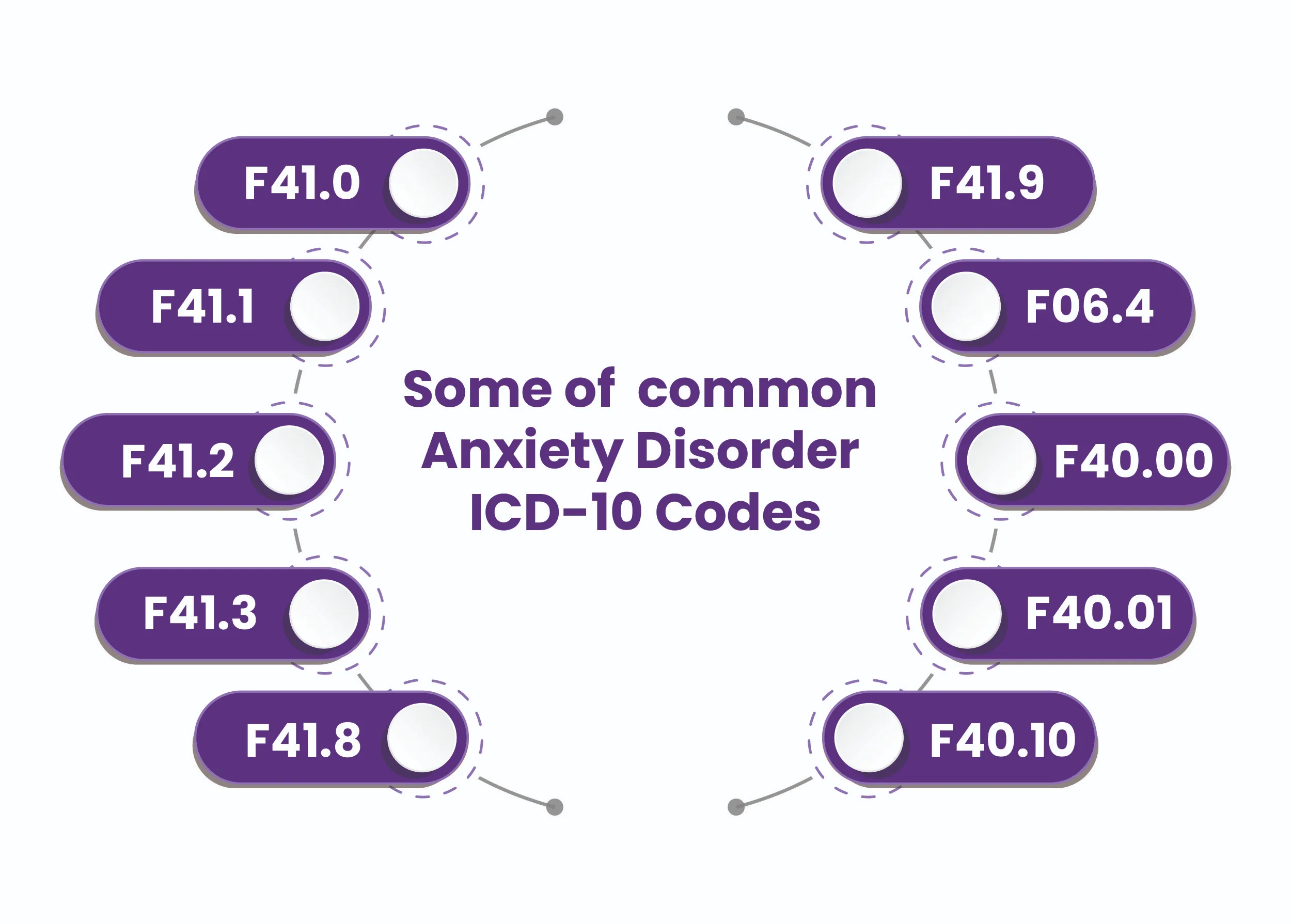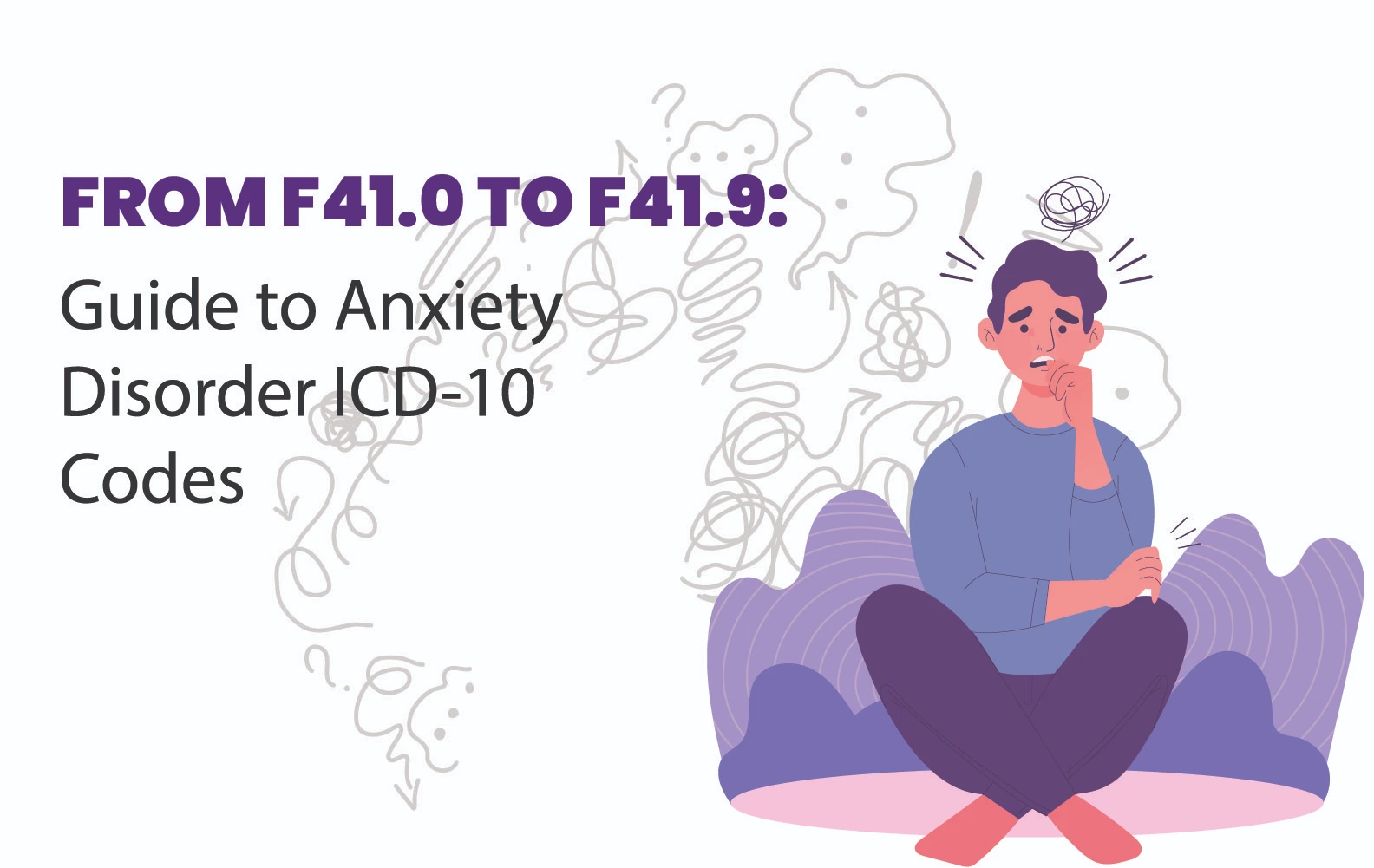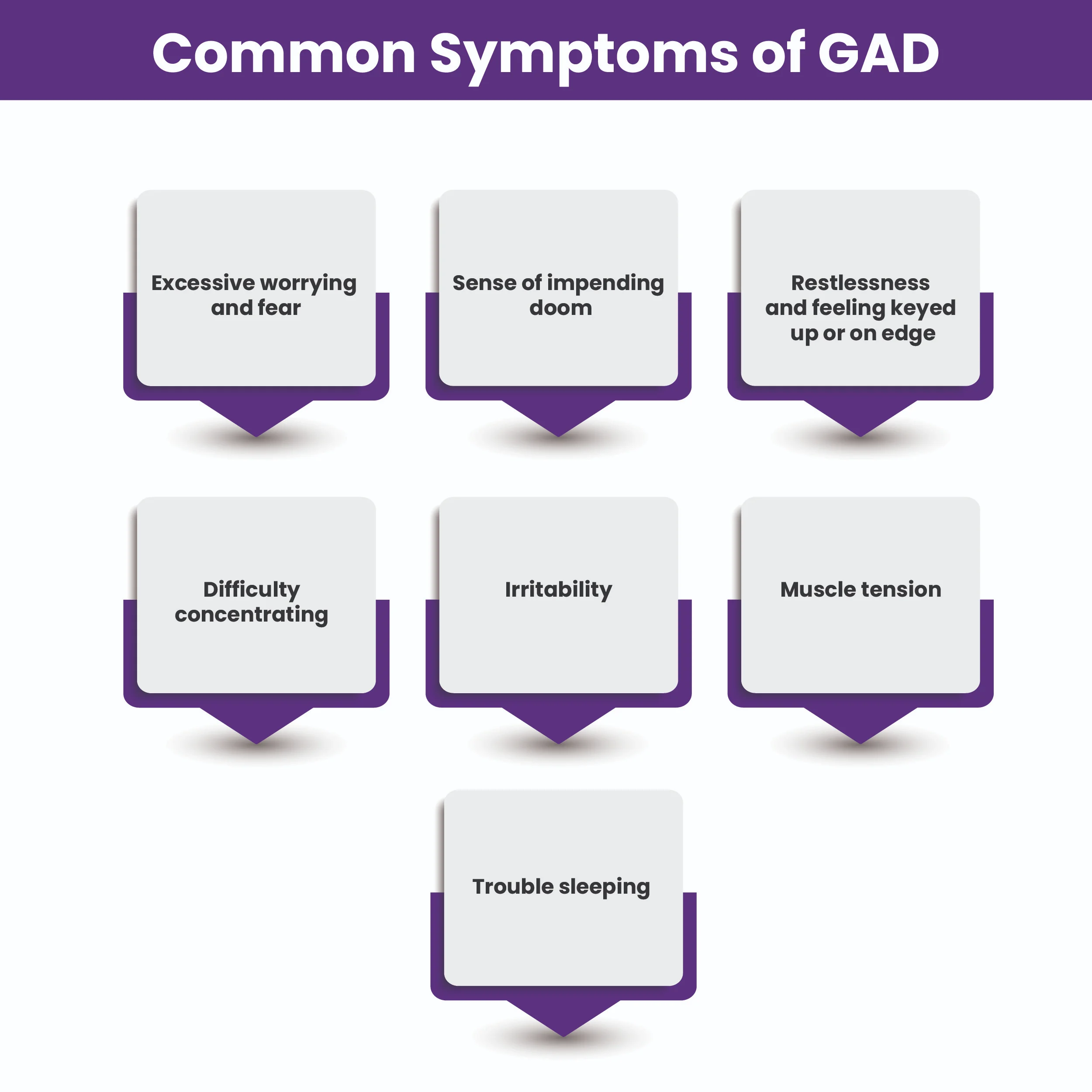Anxiety is considered the most common mental health disorder in the USA. So providers need better to understand the ICD-10 code when billing for anxiety disorders. Due to a wide range of anxiety disorders, it is essential to have the right ICD-10 codes to describe the condition and obtain accurate reimbursement accurately.
Anxiety code range from “F41 to F41.9” and are divided into specific categories, including phobias, obsessive-compulsive disorder (OCD), post-traumatic stress disorder (PTSD), and more. Providers should know the specific coding guidelines and definitions of anxiety to get an accurate diagnosis code.
Most Commonly Used ICD-10 for Anxiety
The most commonly used ICD-10 code for anxiety is F41.0 which stands for Generalized Anxiety Disorder (GAD).
What is Generalized Anxiety Disorder (GAD)
Generalized Anxiety Disorder is a mental health disorder characterized by excessive and persistent worrying, difficulty in concentrating, and restlessness. It affects how people think, feel and behave on a daily basis. Symptoms can include feeling nervous or tense, fatigue, irritability and difficulty sleeping.
Common Symptoms of GAD
A person suffering from a generalized anxiety disorder should have symptoms like:
- Excessive worrying and fear
- Sense of impending doom
- Restlessness and feeling keyed up or on edge
- Difficulty concentrating
- Irritability
- Muscle tension
- Trouble sleeping
Other Anxiety Disorder ICD-10 Codes
Here are some other new ICD-10 codes commonly used for anxiety:
- F41.0 - Panic disorder without agoraphobia (episodic paroxysmal anxiety)
- F41.1 - Generalized anxiety disorder
- F41.2 - Mixed anxiety and depressive disorder
- F41.3 - Other mixed anxiety disorders
- F41.8 - Other specified anxiety disorders
- F41.9 - Unspecified anxiety disorder
- F06.4 - Anxiety disorder due to another medical condition
- F40.00 - Agoraphobia without panic disorder
- F40.01 - Agoraphobia with panic disorder
- F40.10 - Social anxiety disorder (social phobia)

Coding and Documentation for Anxiety Disorder
Coding and documentation for anxiety disorders are important for getting accurate provider reimbursement. By using the appropriate ICD-10 and CPT Codes for different mental health services, providers can be sure they receive the correct payment from insurance companies.
Documentation should thoroughly describe the patient’s symptoms, past medical history, physical examination findings, laboratory studies, diagnostic tests, and treatment plans. The diagnosis should be supported by medical record information to obtain accurate reimbursement, including clinical symptoms and ICD-10 codes.
When coding for anxiety disorder, it is important to use a combination of applicable ICD-10 codes that correctly reflect the patient’s condition and provide enough detail to support accurate reimbursement. Ultimately, accurate coding and documentation for anxiety disorders are essential for providers to get reimbursed correctly and provide quality patient care.
Medical practitioners must stay up-to-date with the ICD-10 codes related to anxiety disorders and ensure they are documented accurately to obtain the correct reimbursement.
Where to Find Anxiety Disorder ICD-10 Codes
Several resources are available for providers to find ICD-10 codes for anxiety disorders. The most accurate and up-to-date information can be found on the American Medical Association’s website. This site provides codes for both physical and mental health diagnoses, as well as ICD-10 guidelines. In addition, practitioners need to familiarize themselves with the ICD-10 coding guidelines to ensure accuracy and compliance.
Anxiety disorder ICD-10 codes can be found in the International Classification of Diseases, Tenth Revision (ICD-10) coding system, which healthcare providers and medical coders use to document and classify diseases and disorders.
The codes can be found in coding books or software medical coders use or through online coding resources such as the World Health Organization (WHO) website.
Additionally, healthcare providers and medical coders may consult with insurance companies or other relevant organizations to ensure that the correct codes are used for billing and reimbursement purposes.
Final Words
In conclusion, it is essential for healthcare providers and medical coders to stay up-to-date with the ICD-10 codes related to anxiety disorders to ensure accurate coding and documentation. This will help them obtain correct reimbursement from insurance companies while providing quality patient care.
If you need assistance finding or understanding the appropriate ICD-10 codes, HMS USA LLC has extensive experience helping healthcare professionals get reimbursed correctly.
ABOUT AUTHOR

Matthew Hoggard
As a blog writer with years of experience in the healthcare industry, I have got what it takes to write well researched content that adds value for the audience. I am a curious individual by nature, driven by passion and I translate that into my writings. I aspire to be among the leading content writers in the world.

